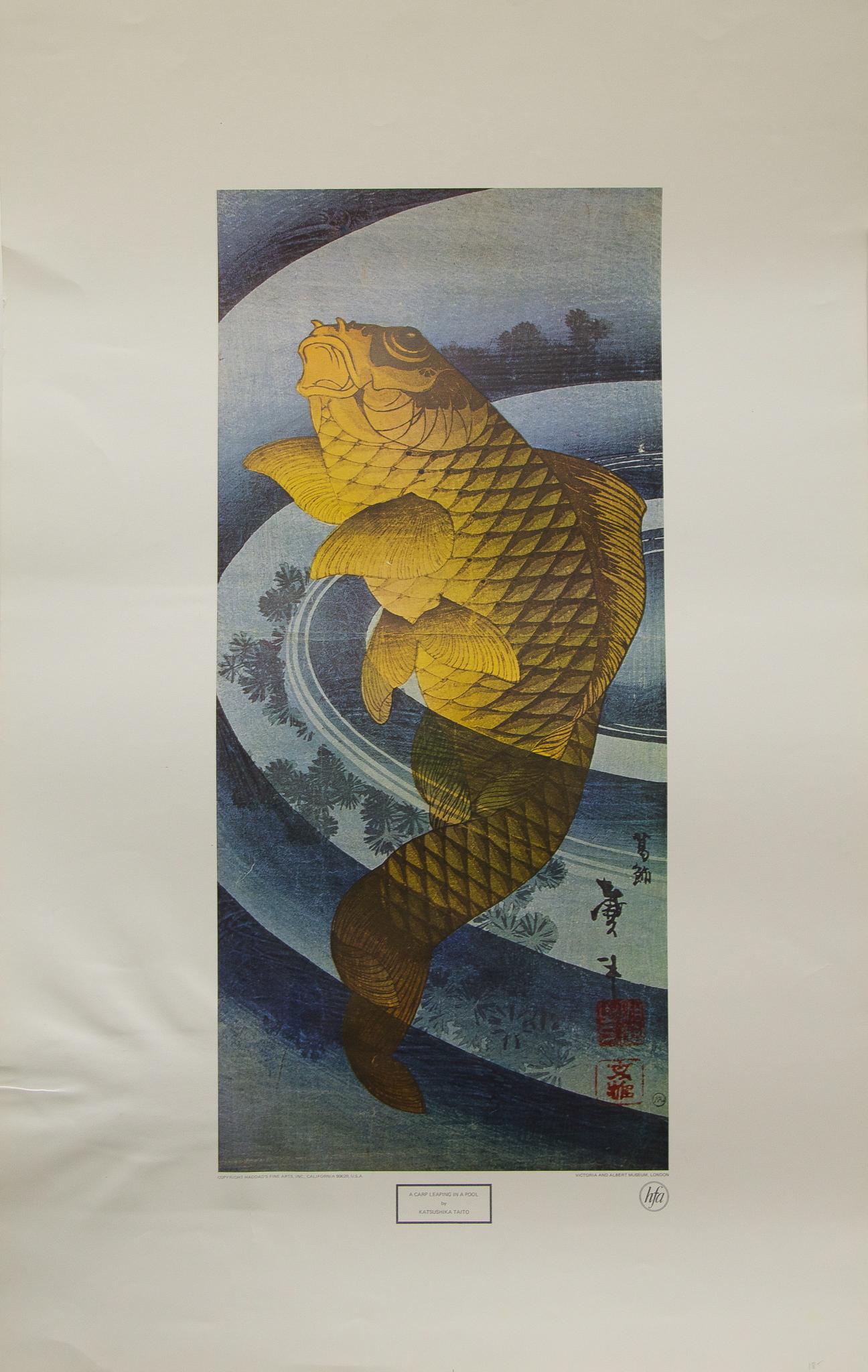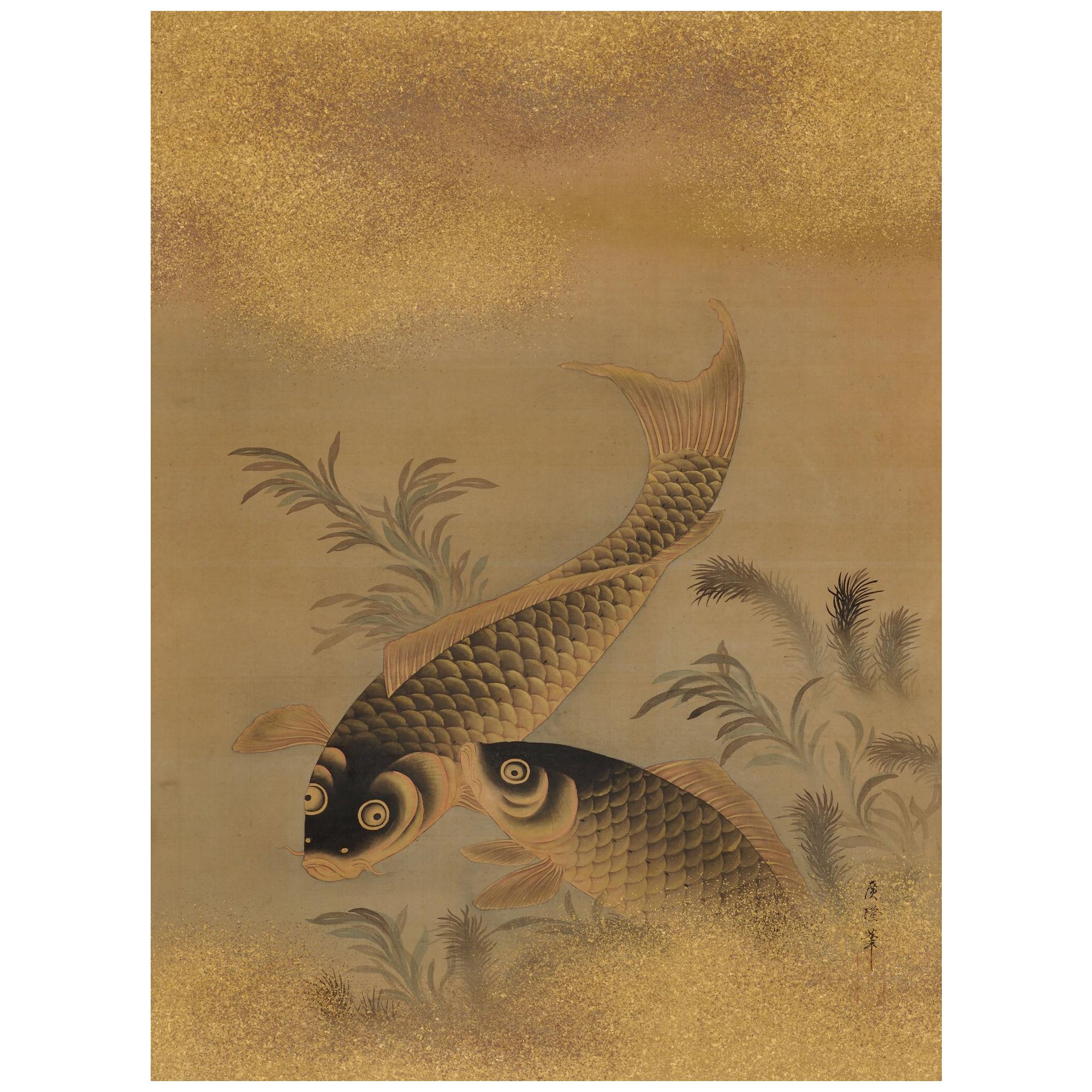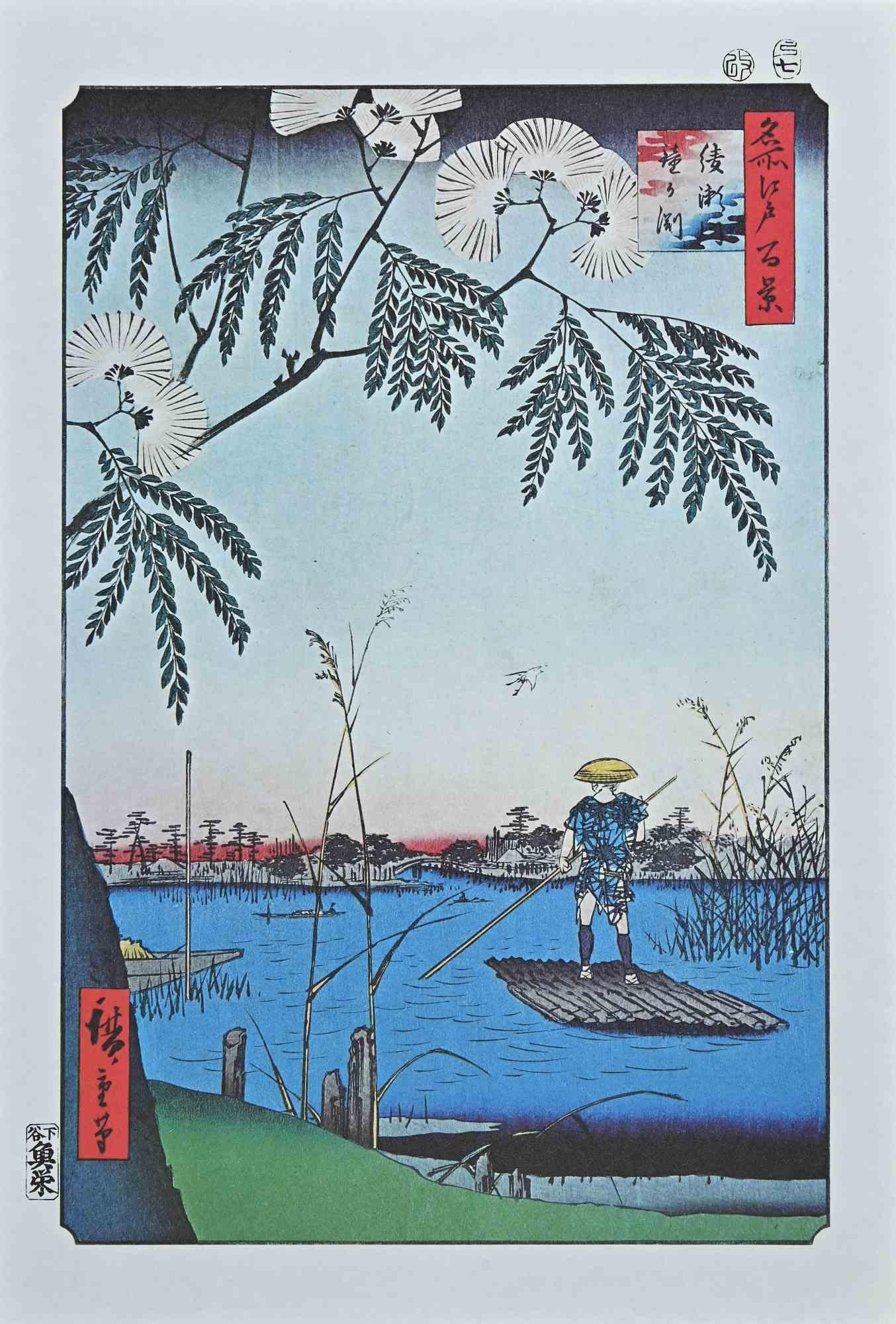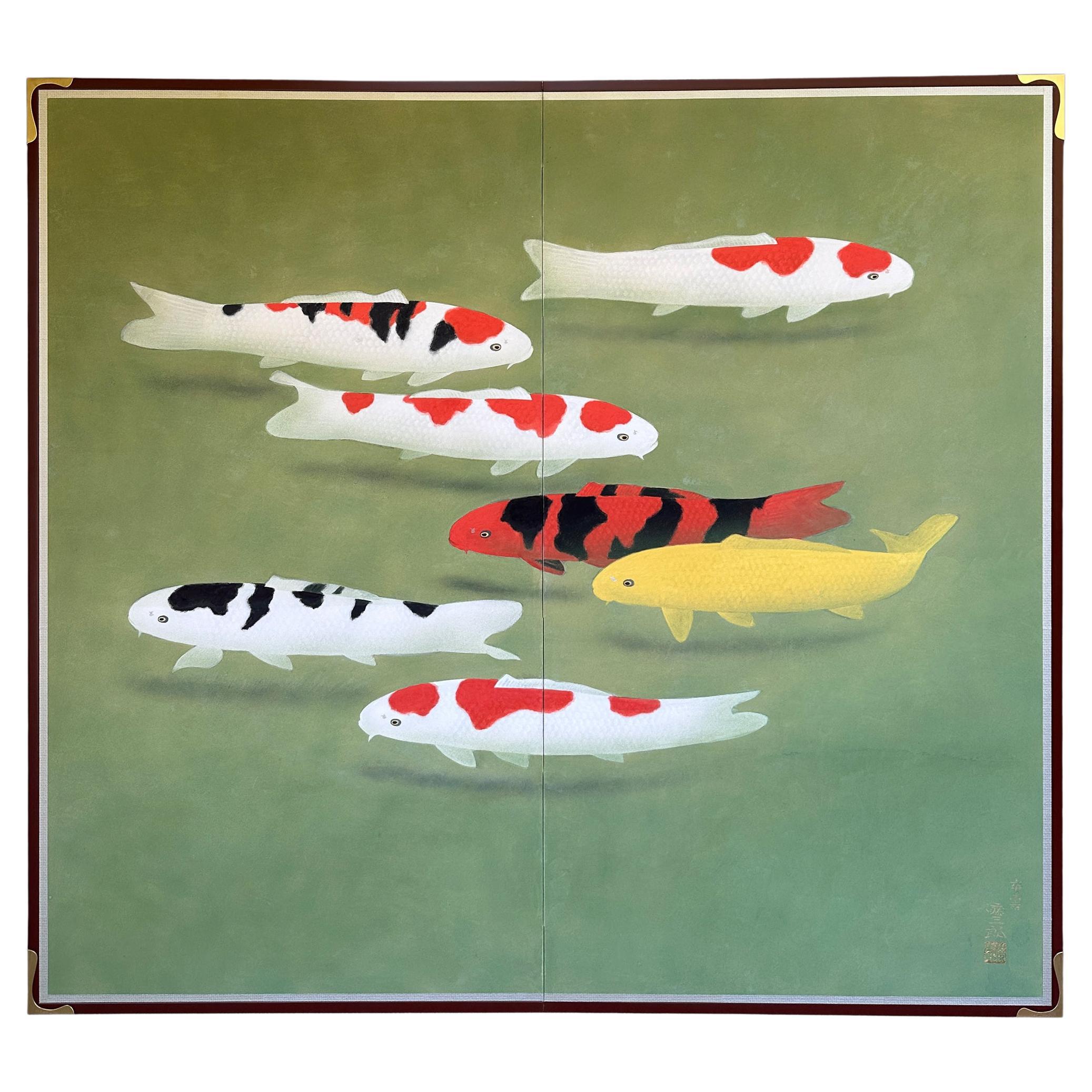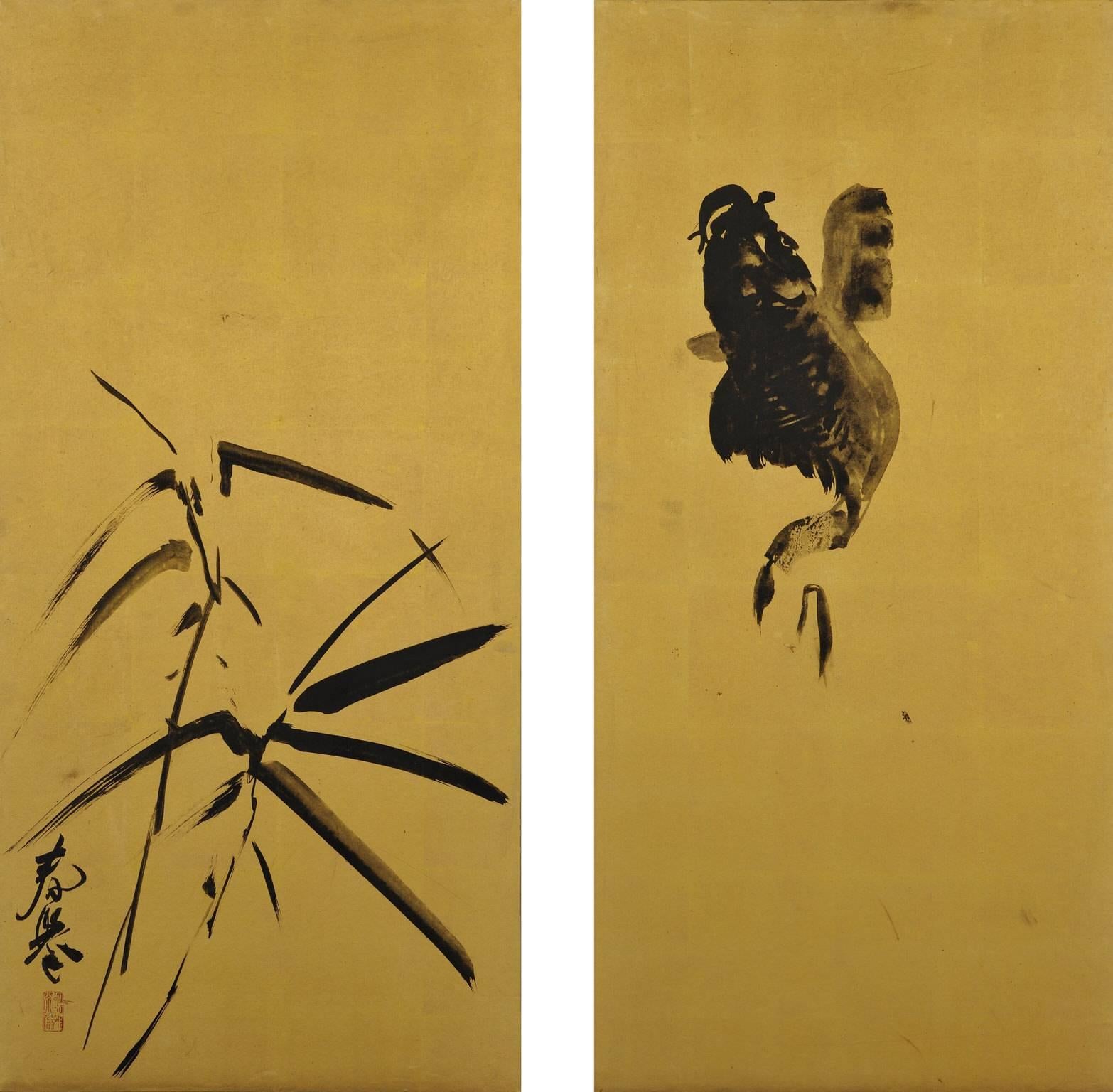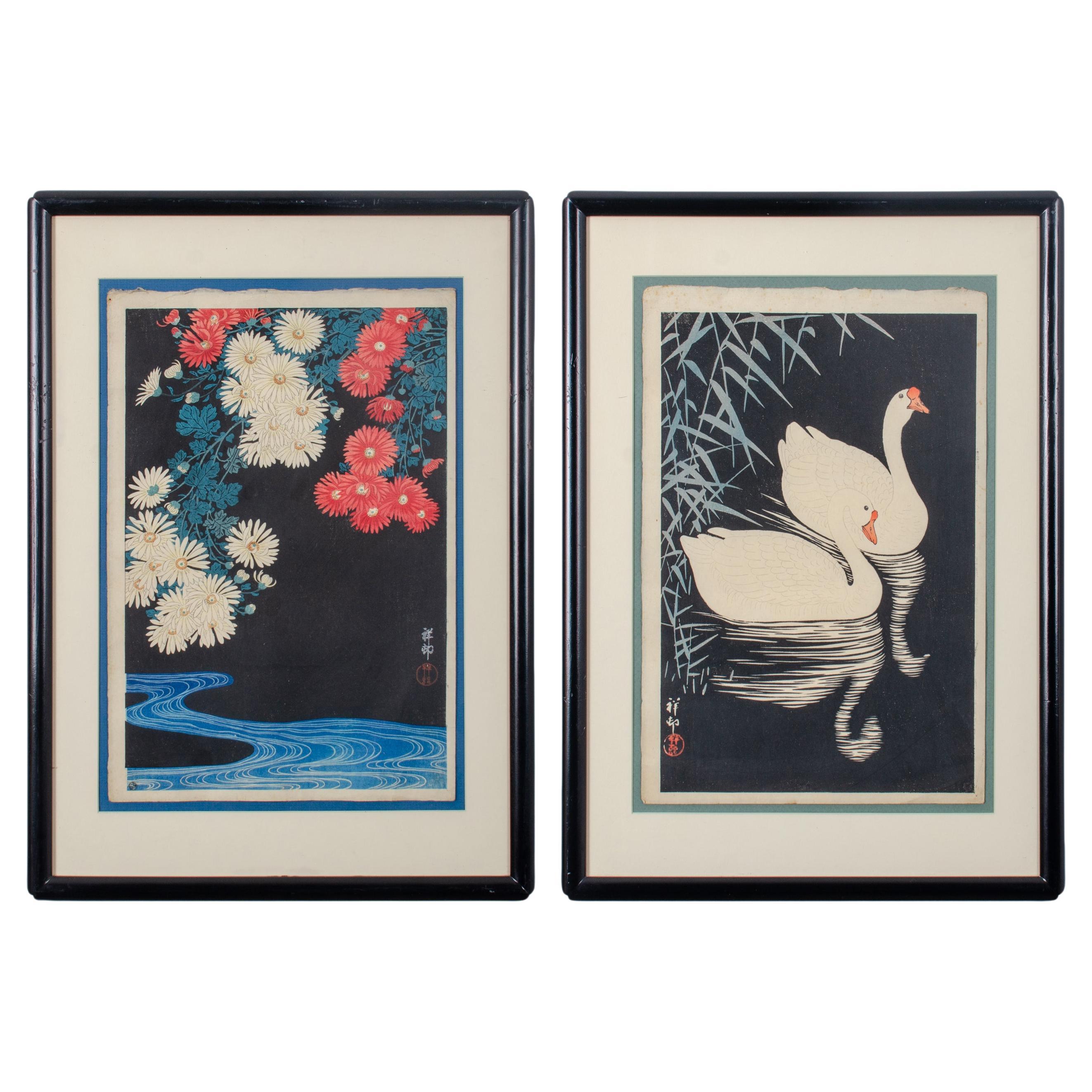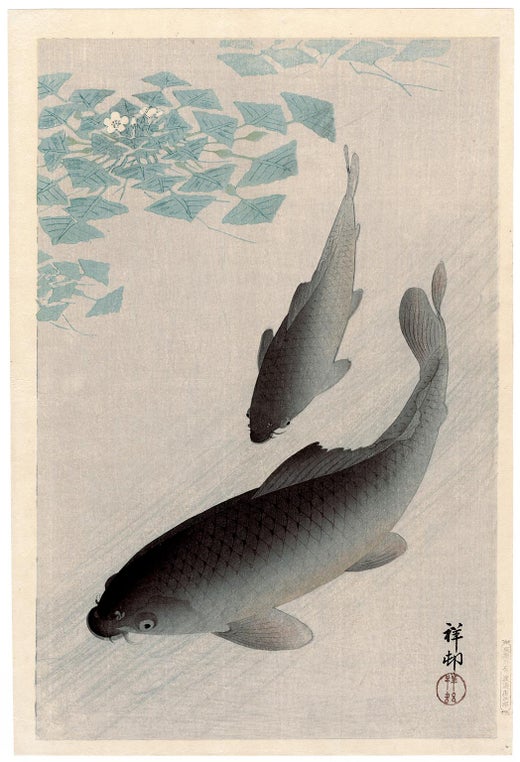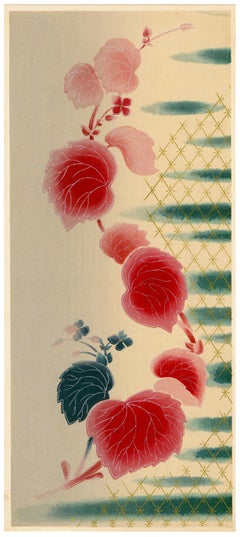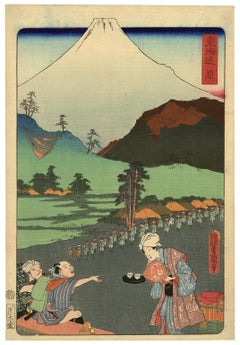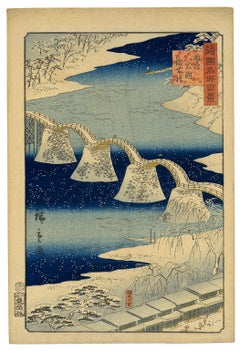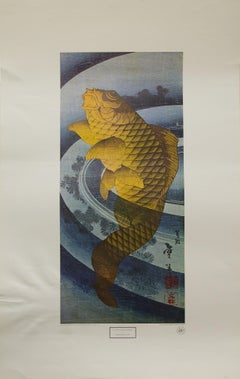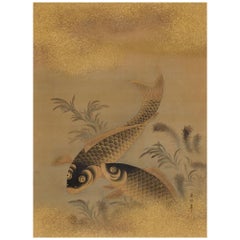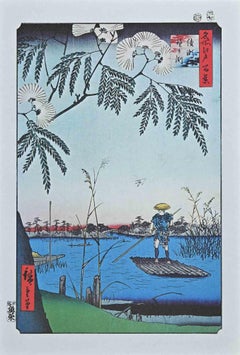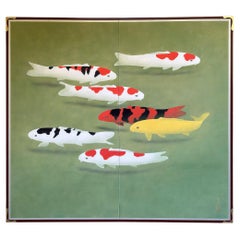Items Similar to 'Carp and Water Chestnut' — Showa lifetime impression
Want more images or videos?
Request additional images or videos from the seller
1 of 3
Ohara Koson'Carp and Water Chestnut' — Showa lifetime impression1926
1926
$1,200
£911.92
€1,049.55
CA$1,717.26
A$1,886.78
CHF 973
MX$22,605.51
NOK 12,354.10
SEK 11,593.82
DKK 7,838.66
About the Item
Ohara Koson (1877-1945), 'Carp and Water Chestnut', color woodblock print, 1926. A fine impression, with fresh colors, on cream Japan paper; the full sheet, in excellent condition.
Signed 'Koson' with the artist’s red seal 'Koson'. Published by Watanabe Shozaburo. With the Watanabe 'C' seal in the lower right margin, indicating a lifetime impression printed between 1929-1942.
Image size 13 1/2 x 7 1/4 inches (343 x 184 mm); sheet size 14 1/2 x 7 1/2 inches (368 x 191 mm). Archivally sleeved, unmatted.
Literature: 'Crows, Cranes, and Camellias: The Natural World of Ohara Koson', Newland, Amy R.: Jan Perree & Robert Schaap, Leiden: Hotei Publishing, 2001. S39.1, pl 169.
Collections: National Museum of Asian Art (Smithsonian), Smart Museum of Chicago (University of Chicago).
In Japanese art, the carp represents good luck and good fortune.
ABOUT THE ARTIST
Koson Ohara (also Shoson and Hoson, 1877-1945) is the most renowned Japanese artist of early 20th-century kacho-e (bird-and-flower pictures) woodblock printmaking. With meticulous detail, sensitive color, and a palpable reverence for flora and fauna, Koson brought the genre into the modern era.
Koson was born in Kanazawa with the given name Matao Ohara. He began his artistic career studying painting under the Shijo-style master Kason. Around the turn of the century, Koson became a teacher at the Tokyo School of Fine Arts, where he met Ernest Fenollosa, an American collector, scholar, and admirer of Japanese art and culture. Around 1905, Koson started to produce woodblock prints. Fenollosa, the curator of Japanese Art at the Museum of Fine Arts, Boston, and an adviser to the National Museum of Modern Art in Tokyo, persuaded Koson to export his bird prints to American art collectors.
Between 1900 and 1912, Koson worked with several different publishers and designed a series of Russo-Japanese War prints, as well as genre landscapes, but his passion remained with kacho-e. His earliest and rarest designs are notable for their narrow formats and soft colors. All his woodblock prints were signed or sealed Koson—most of them published by Kokkeido and Daikokuya. After 1912, he changed his name to Shoson and dedicated himself to painting.
Ten years later, Koson returned to printmaking, and in 1926, he began designing woodblock prints for the esteemed Shin Hanga publisher Shozaburo Watanabe. Koson changed his name once again, this time to Hoson, when he produced designs collaboratively published by Sakai and Kawaguchi around 1930. He also served as an adviser to the National Museum of Modern Art in Tokyo.
Koson’s prints can be found in many major museums worldwide, including the British Museum, Brooklyn Museum, Freer Gallery, Harvard Art Museums, LACMA collections, Museum of Fine Arts, Boston, and the Metropolitan Museum of Art.
Ohara Koson
Ohara Koson was a prolific printmaker of the 20th century widely known for his kacho-ga, bird and flower prints. During his study with Kason, he took his artist name Koson, a partial adaptation of his teacher's name. Early in his career, many of Koson’s prints were muted in color and captured a sense of calmness and elegance. Koson’s depiction of birds are very realistic, the details of body and feathers in particular were always depicted with meticulous care.
About the Seller
5.0
Recognized Seller
These prestigious sellers are industry leaders and represent the highest echelon for item quality and design.
Platinum Seller
Premium sellers with a 4.7+ rating and 24-hour response times
Established in 1995
1stDibs seller since 2016
325 sales on 1stDibs
Typical response time: 1 hour
Associations
International Fine Print Dealers Association
- ShippingRetrieving quote...Shipping from: Myrtle Beach, SC
- Return Policy
Authenticity Guarantee
In the unlikely event there’s an issue with an item’s authenticity, contact us within 1 year for a full refund. DetailsMoney-Back Guarantee
If your item is not as described, is damaged in transit, or does not arrive, contact us within 7 days for a full refund. Details24-Hour Cancellation
You have a 24-hour grace period in which to reconsider your purchase, with no questions asked.Vetted Professional Sellers
Our world-class sellers must adhere to strict standards for service and quality, maintaining the integrity of our listings.Price-Match Guarantee
If you find that a seller listed the same item for a lower price elsewhere, we’ll match it.Trusted Global Delivery
Our best-in-class carrier network provides specialized shipping options worldwide, including custom delivery.More From This Seller
View AllJapanese Kimono Fabric Design — Vintage Color Woodblock Print
Located in Myrtle Beach, SC
Anonymous, Japanese Kimono Fabric Design, color woodcut, c. 1930. A superb impression, with fresh colors, fine graduations, and metallic gold motifs, on ...
Category
Early 1900s Showa Figurative Prints
Materials
Woodcut
'Lakeside Shower, Matsue' — Showa-era Woodblock Print
By Kawase Hasui
Located in Myrtle Beach, SC
Kawase Hasui, 'Chihan no Ame, Matsue' (Lakeside Shower, Matsue), color woodblock print, 1932. A fine, atmospheric impression, with fresh colors; the full sheet, from a postwar editio...
Category
1930s Showa Figurative Prints
Materials
Woodcut
'Tokaido' — Mt. Fuji Rising – Mid-Nineteenth Century Woodblock Print
By Utagawa Kunisada (Toyokuni III)
Located in Myrtle Beach, SC
Utagawa Kunisada (Tokoyuni III), 'Tokaido', color woodblock, 1863. Signed in the cartouche, lower right. A fine impression, with rich, fresh colors and pronounced woodgrain, the full...
Category
1860s Edo Figurative Prints
Materials
Woodcut
Kintai Bridge at Iwakuni in Suo Province (Suo iwakuni kintai-bashi), 1859
By Hiroshige II
Located in Myrtle Beach, SC
Utagawa Hiroshige II (1829-1869), 'Kintai Bridge at Iwakuni in Suo Province' (Suo iwakuni kintai-bashi), from the series 'One Hundred Views of Famous Pla...
Category
1850s Edo Landscape Prints
Materials
Woodcut
'Rain at Shinagawa, Ryoshimachi' — Showa-era Woodblock Print
By Kawase Hasui
Located in Myrtle Beach, SC
Kawase Hasui, 'Rain at Shinagawa, Ryoshimachi' from the series 'Selection of Views of the Tokaido', woodblock print, 1931. A very fine, atmospheric impression, with fresh colors; the...
Category
1930s Showa Figurative Prints
Materials
Woodcut
'Flowers and Ko-Imari' — Taisho/Showa Shin Hanga Woodblock Print
Located in Myrtle Beach, SC
Masami Iwata, 'Flowers and Ko-Imari', color woodblock print, c. 1960, edition 250. Signed, and with the artist’s seal, lower right. A superb, painterly impression, with fresh colors,...
Category
1960s Modern Still-life Prints
Materials
Woodcut
You May Also Like
"A Carp Leaping in a Pool" by Katsushika Taito. Haddad's Fine Arts, Inc.
By Katsushika Taito II
Located in Chesterfield, MI
Published By Haddad's Fine Arts, Inc
Distressed condition, water damage
Measures 35 in x 22.5 in
Category
20th Century Animal Prints
Materials
Lithograph
Japanese Painting, Hanging Scroll, Mid 19th Century, Koi and Water Plants
By Iwase Hirotaka
Located in Kyoto, JP
Iwase Hirotaka (1808-1877)
Koi and Water Plants
Hanging scroll, ink, color, gold wash and gold flecks on silk
Inscription: Hirotaka
Seal: Ille...
Category
Antique 1860s Japanese Edo Paintings and Screens
Materials
Silk
Ayase and Kanegafuchi River - Lithograph after Utagawa Hiroshige -1950s
By Utagawa Hiroshige
Located in Roma, IT
Ayase and Kanegafuchi River is a modern artwork realized in the mid-20th century after Utagawa Hiroshige.
Mixed colored lithograph after a woodcut realized by Utagawa Hiroshige in 1...
Category
Mid-20th Century Modern Figurative Prints
Materials
Lithograph
Group of Koi (Carp) screen ) by Nitten artist Tozaburo Ohno (大野藤三郎)
Located in Fukuoka, JP
Tozaburo Ohno (大野藤三郎)
A Japanese-style painter known for his refined depictions of koi carp and seasonal flowers. Born in 1917 in Osaka (though some sources cite Kyoto), he studied ...
Category
20th Century Japanese Showa Paintings and Screens
Materials
Wood, Paper
Yamamoto Shunkyo (1871-1933) Japanese Framed Painting Pair, Carp and Bamboo
Located in Kyoto, JP
Two framed panels by Yamamoto Shunkyo depicting a carp (koi) leaping from a river.
Ink and gold leaf on paper.
Instinctively brushed in a freehand s...
Category
Early 20th Century Japanese Meiji Paintings and Screens
Materials
Gold Leaf
Ohara Koson (Shoson) Japanese Woodblock Prints - A Pair
By Ohara Koson
Located in Savannah, GA
Ohara Koson (Shoson)
(Japanese, 1877-1945)
Pair of woodblock prints
Two white geese and reeds, c.1928
Chrysanthemum and Stream, c. 1931
P...
Category
Vintage 1930s Japanese Prints
Materials
Paper
